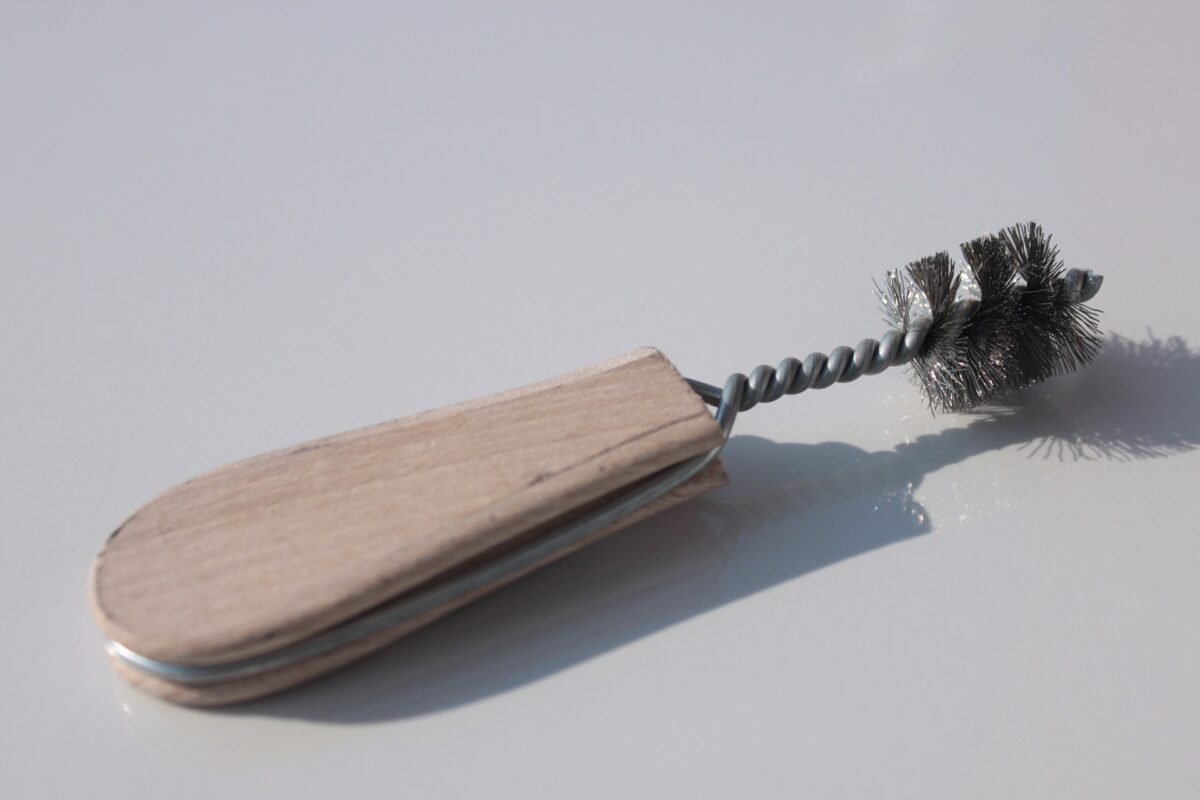How does brush wire work? For superior twisted-in-wire brushes, brush wire is highly sought after. The twisted-in-wire brush is also called a tube brush, bottle brush, pipe brush, spiral brush, or power cleaning brush. In case you couldn’t tell by the countless names, wire brushes have many purposes. Most commonly, brush wire is used in cleaning applications to remove dust, dirt, rust, or other debris from a surface.
Brush wire can be used manually by turning it by hand or by inserting it into power tools for use at a higher speed. Here are some specific uses for brush wire:
- Cleaning the internal portion of tubes, pipes, and cylinders
- Cleaning medical equipment and devices
- The removal of gases during vacuum distillation
- Cleaning hydraulic nozzles and fittings
- Plastics manufacturing
- Slug removal
- And much more!
Choose a Brush Design
A wire brush can be customized in many ways to best suit the needs of the customer, from the stem to the bristle type. Wire brushes come in different varieties, each made differently according to its purpose. In general, wire brushes are made by inserting bristle material between the stem wires. To secure the filament, the stem wires are tightly twisted.
When you’re ready to design a superior brush, four main factors must be considered. These include stem design, material, length, and diameter.
The specification you choose depends on the degree of flexibility, stiffness, and corrosion resistance required. Bristle crimping style can also be considered. Bristle crimping can be divided into three types: gear, pin, and straight hank. Crimping or waved bristles extend the life of brushes during abrasive cleaning. Opposed to curly bristles, straight bristles are more flexible and soft.
Brush Stems Types
Among the many stem designs, three stand out above the rest:
- Single-Spiral Single-Stem: Two wires connected by a single layer of filament.
- Double-Spiral Single-Stem: A filament between four stem wires with two stem wires on each side. This results in a stronger base as well as a higher filament density.
- Double-Spiral Double-Stem: Two layers of the chosen fill bristles twisted between four stem wires. Perpendicular layers with a single stem wire in each quadrant result in the strongest and highest density brush.
Brush Fill Types
The purpose of your brush wire will depend largely on the make-up of the brush bristles and fills. Several options are available, including aluminum, copper, phosphor bronze, brass, nickel, and silver.
- Brass wire brushes: These offer a delicate brushing action that is rust-resistant and spark-proof.
- Phosphor Bronze Wire Brushes: Brushes that are similar to brass, but retain their shape better.
- Carbon Steel Wire Brushes: Used for dry environments where abrasion is required. They are used for deep cutting where aggressive abrasion is required.
- Stainless Steel Wire Brushes: Rust-proof, durable, ideal for stainless steel and aluminum applications. Another advantage? No ferrous deposits get left behind.
- Oil Tempered Wire (Flat Wire) Brushes: Flat wire is the most aggressive brushing material.
The Best Brush Wire For Your Projects
The different brush designs, stems, and fill types may seem overwhelming, but when you pick the best-customized option for your brush wire, your future projects will thank you. Some of the most common uses we discussed are cleaning the insides of tubes and pipes, cleaning medical equipment, plastic manufacturing, and slug removal. It’s crucial to have the right type of brush wire for each individual project for maximum efficiency.
When you’re ready to invest in a company that manufactures brush wires catered to your needs, take care to consider the design, stem, and fill types. When you select from each category carefully, you ensure that the brush wire you are left with will get the job done!


